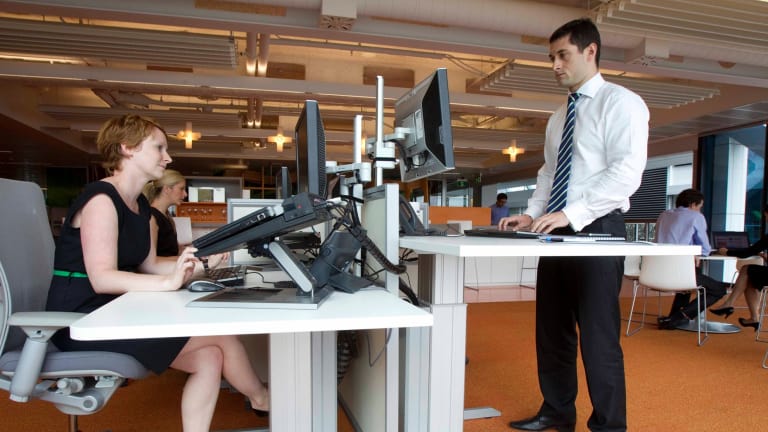The Benefits of Standing vs Sitting
The Mayo Clinic conducted a 10-year, $20 million research study on nutrition, activity and behavior related to weight management and obesity prevention.
The research determined that sedentary environments are a primary contributor to the rise in obesity that increases health costs and takes a toll on quality of life.
This research supported the value of N.E.A.T. (Non-Exercise Activity Thermogenesis), which is all the calories one burns while doing normal, non-exercise activity.
Much of our health depends upon adequate, regular movement. In fact, all movement counts toward our health, and non-exercise activity is crucial. Our bodies were designed to move and when we don’t, our physical health deteriorates.
One culprit driving the obesity epidemic is “sitting disease.” Most of us spend 10-15 hours a day just sitting!
No matter how much you exercise, sitting for excessively long periods of time is a risk factor for early death, according to a 2017 study in Annals of Internal Medicine.
There’s a direct relationship between time spent sitting and your risk of early mortality of any cause, researchers said, based on a study of nearly 8,000 adults. As your total sitting time increases, so does your risk of an early death.
The positive news: people who sat for less than 30 minutes at a time had the lowest risk of early death.
Replacing a few hours of sitting at your desk with standing can lead to significant health benefits over time. In addition to the cardiovascular and musculoskeletal benefits, there is also a significant difference in calories burned.
A study by the BBC and the University of Chester found remarkable health benefits of standing versus sitting. Standing caused participants to have a much higher heart rate (around 10 beats per minute higher), which adds up to burning about 50 calories more per hour versus sitting. Over a year, that adds up to about 30,000 more calories or 8 pounds of fat.
There are many documented benefits of standing, such as reducing your risk of type 2 diabetes, cardiovascular disease, certain types of cancer and back pain.
The general rule is to not sit more than 30 minutes without standing or getting up and moving. Set an alarm on your watch, phone or computer to remind you to get up after you’ve been sitting for 30 minutes. Move around or walk for five minutes to help reduce the health risks from all that sitting.
Get in Motion. Stay in Motion.






